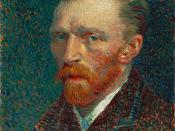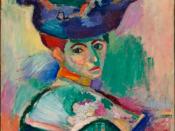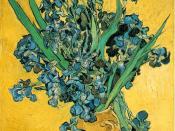Impressionism was a major movement in painting that developed during the late 19th and early 20th Century.
Impressionism started as a rebellion of a few artists in Paris around 1863, against a strict art establishment. One day they took their easels, went to a nearby forest and started painting in open air. They painted with swift, rapid brush strokes trying to catch the impression of the moment. They showed the effects of
light.
One of the artists, Monet, tried to capture
effects of light and weather on the spot.
In the landscape paintings,
Impressionists used rapid brush strokes to
capture the effect of the view.
They expressed light effects by bold contrasts
of colour.
The critics did not like this new style of
painting; they thought the rapid brushstrokes
made the paintings look unfinished and that
the colour looked unnatural.
The impact of impressionism on later artistic movements, in particular Fauvism.....
Impressionists chose to paint everyday scenes
from the world they knew.
They experimented with composition -
framing or cropping their paintings.
Impressionists painted real life landscapes as
they saw them. They used vibrant, light colours.
Impressionists applied their paint with great brushstrokes - they were not concerned about a beautiful finish.
The style of impressionism was to try and paint real-life paintings with the use of light and colour.
The theory of the impressionists was 'that pure, unmixed colour should be applied to the canvas to create an impression of the subject.'
Post-impressionism then evolved from Impressionism -
Post - Impressionism is characterized by bright colour and sharp, outlined edges.
An example of the Post - impressionists are:
÷Seurat- He explored the effects of one colour on another in pointillism.
÷Van Gogh - He used an expressive use of colour and line.
Fauvism then developed from Post - impressionism.



Very good
excellent resource for help in art, thanks, it was very helpful
1 out of 1 people found this comment useful.